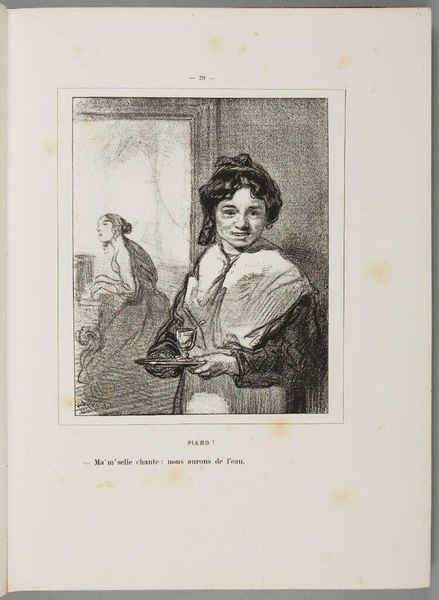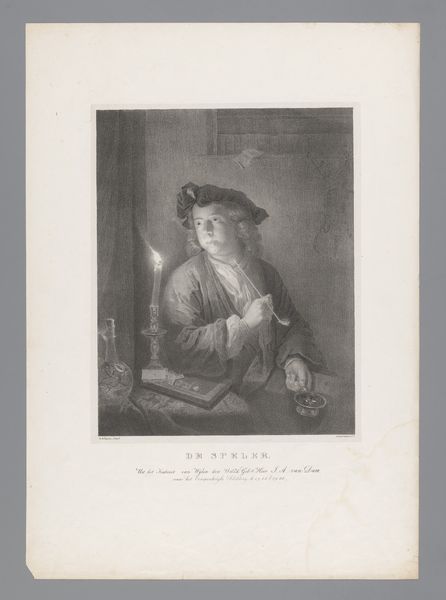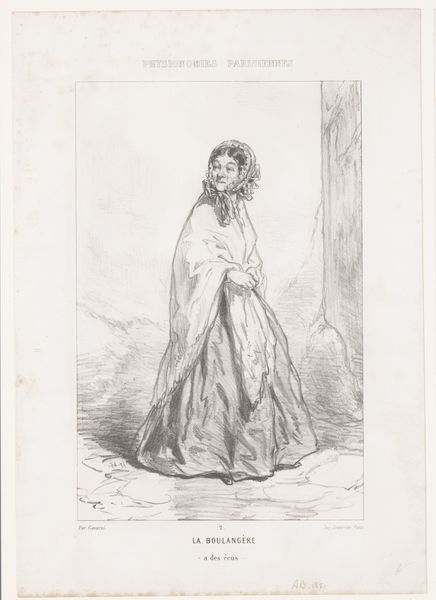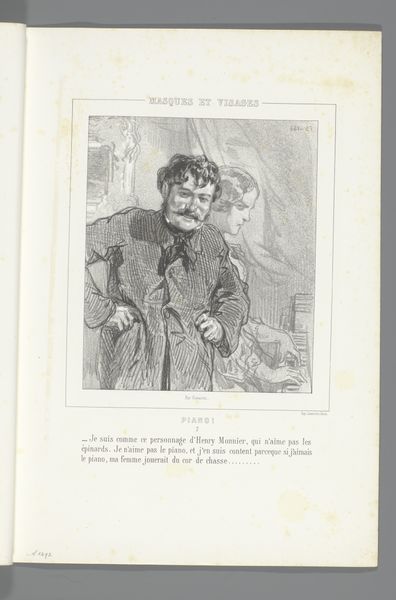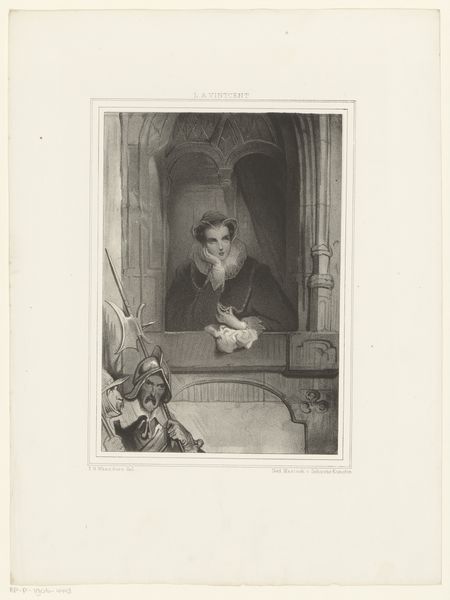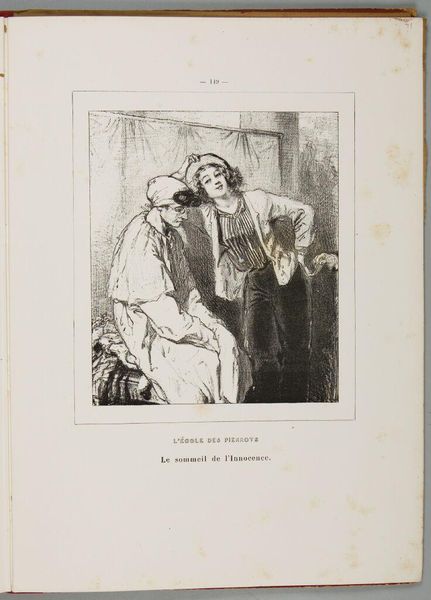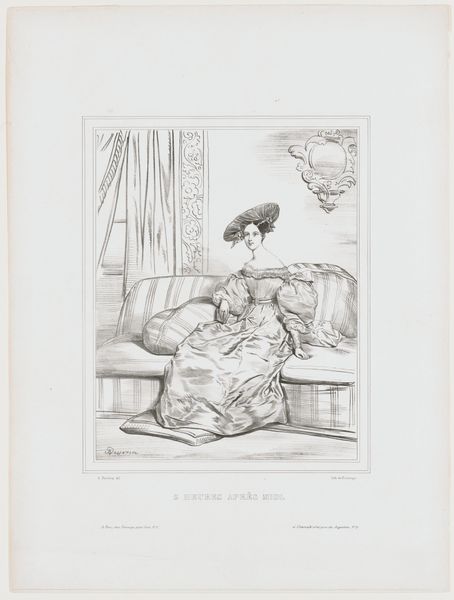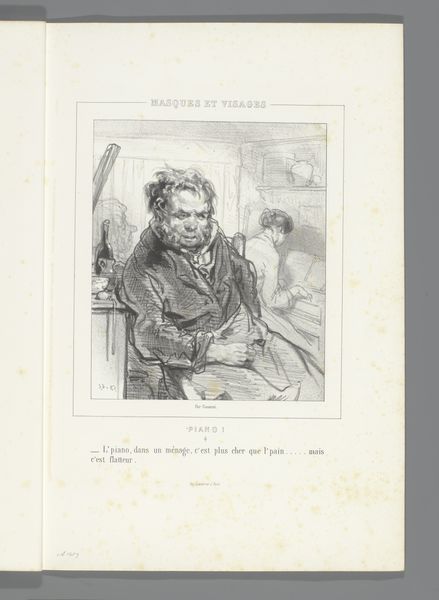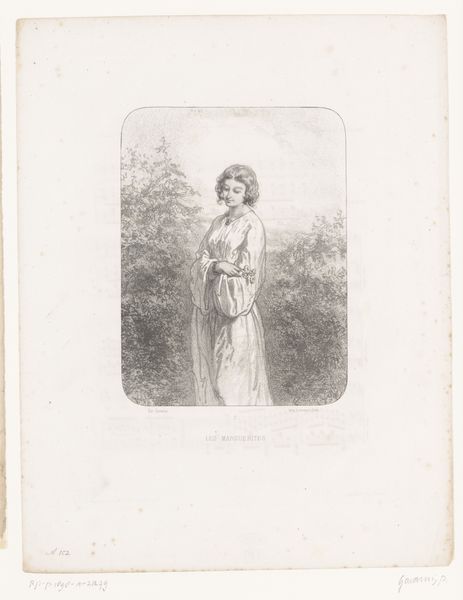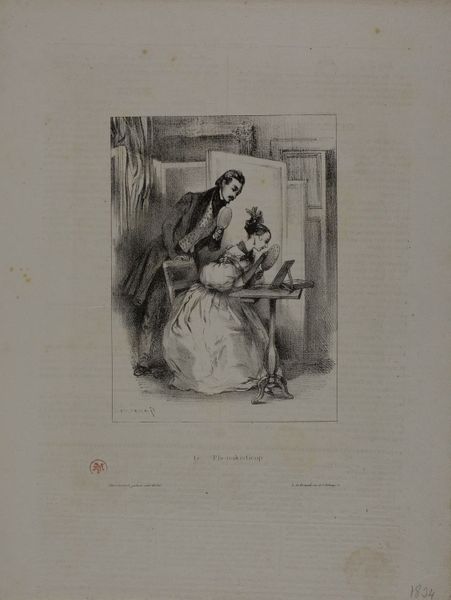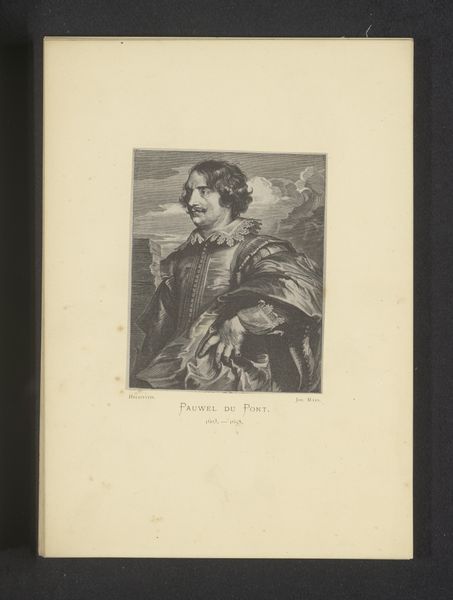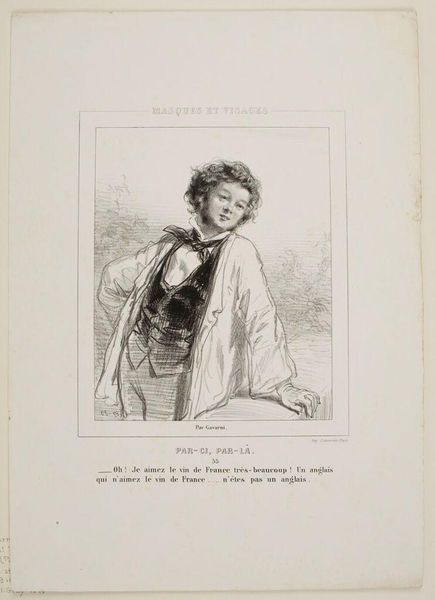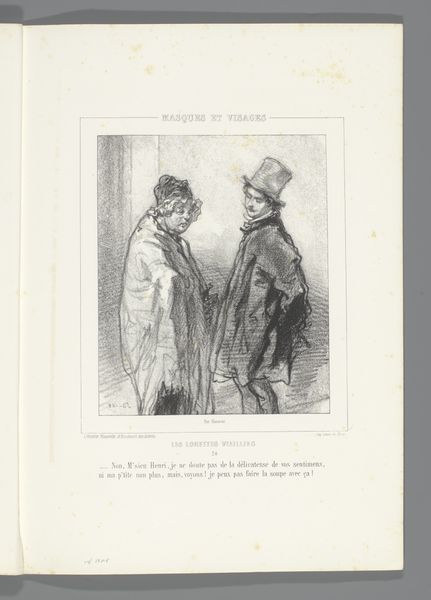
drawing, lithograph, print
#
portrait
#
drawing
#
lithograph
# print
#
figuration
#
intimism
#
genre-painting
#
realism
Dimensions: height 378 mm, width 275 mm
Copyright: Rijks Museum: Open Domain
Curator: This lithograph by Paul Gavarni, created in 1853, is titled "Dienstmeisje met zingende dame achter de piano," which translates to "Maid with Singing Lady Behind the Piano." Editor: There’s something strikingly direct about the gaze of the maid, who occupies the foreground, while the singer becomes almost spectral in the background. The overall composition, with its contrasting light and shadow, feels charged. Curator: Yes, it's crucial to consider Gavarni's context. He was a keen observer of Parisian society, often depicting the working class with an eye towards their material conditions. The print is a product of the evolving printmaking industry and its role in circulating images to a growing public. Editor: I'm particularly drawn to the interplay of lines and textures, almost blurring to indicate the difference in status and presence. Look how the solid figure of the maid contrasts the hazy form of the singer at the piano; there is an emphasis on depicting class disparities, but at what cost? Curator: Exactly. Gavarni is not simply illustrating a scene, but offering commentary. The availability of prints like this allowed for a broader discussion of social dynamics and labor practices. What were the actual working conditions like for maids in Parisian households at that time? And how is their image shaped, then consumed? Editor: I also wonder about the placement of the reflection in the drawing, its depth and obscurity creates visual dissonance between the two planes in a single work, prompting questions around female agency. Curator: Ultimately, this print highlights how Gavarni used the accessible medium of lithography to engage with contemporary social issues, portraying both the realities and perceptions of class in 19th-century Paris. It reflects changes in material culture and distribution channels as much as the shift towards Realism. Editor: Considering the contrasts, Gavarni captures more than just a snapshot; he invites the viewer to decode the symbolic weight behind these relationships in his artistic structure and use of materials. It’s about presence and absence in so many registers.
Comments
No comments
Be the first to comment and join the conversation on the ultimate creative platform.
